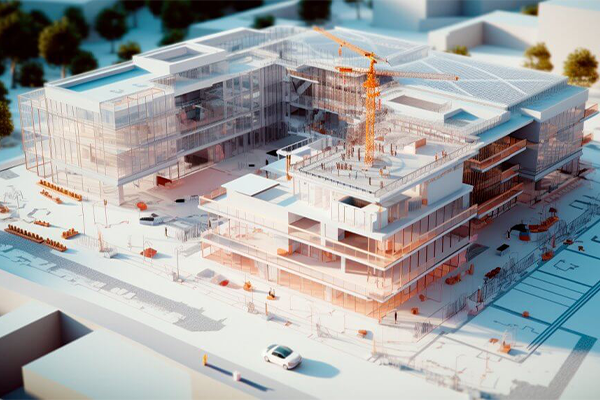In the fast-evolving world of business and technology, Architectural Modelling has become an essential practice for organizations aiming to design robust systems, streamline processes, and build scalable solutions. Whether in the field of information technology, enterprise management, or physical infrastructure, Architectural Modelling acts as a blueprint that provides clarity, reduces risk, and aligns stakeholders toward common objectives.
At Genesis Infoserve, we believe that a well-defined architectural model not only improves efficiency but also lays the foundation for sustainable growth. In this blog, we will explore in detail the different types of Architectural Modelling and the goals that drive their adoption in modern organizations.
What is Architectural Modelling?
Architectural Modelling is the practice of creating structured representations of a system, process, or framework to better understand, analyze, and improve it. These models serve as a visual and conceptual guide for decision-makers, architects, and developers. By translating complex requirements into structured forms, architectural models provide clarity and consistency in execution.
The power of Architectural Modelling lies in its ability to reduce ambiguity, improve communication between technical and non-technical stakeholders, and support organizations in making informed choices about their future direction.
Why Architectural Modelling Matters
Every organization today operates in a highly competitive and technology-driven environment. Without a clear roadmap, systems can become fragmented, inefficient, and costly to maintain. Architectural Modelling ensures that teams are aligned, resources are optimized, and risks are minimized.
Some of the key reasons it matters include:
1- Providing a unified view of business and IT systems
2- Identifying redundancies and streamlining operations
3- Supporting regulatory compliance and governance
4- Offering insights for scaling and integrating new technologies
Types of Architectural Modelling
There are several approaches to Architectural Modelling, each focusing on different aspects of an organization’s ecosystem. The type of model chosen often depends on the goals, industry requirements, and complexity of the systems involved. Below are the most widely used types:
1. Enterprise Architecture Modelling
Enterprise Architecture Modelling provides a holistic view of the entire organization, covering business processes, data, applications, and technology infrastructure. It aligns IT strategy with business goals and ensures that investments deliver maximum value.
Popular frameworks like TOGAF (The Open Group Architecture Framework) are often used in this type of Architectural Modelling.
Key Benefits:
1- Strategic alignment of IT and business
2- Enhanced decision-making at the enterprise level
3- Long-term cost savings and efficiency gains
2. Business Architecture Modelling
This type focuses on the structure and operation of an organization from a business perspective. It highlights processes, organizational units, and value streams, making it easier to identify inefficiencies and opportunities for improvement.
Key Benefits:
1-Greater visibility into business operations
2- Streamlined workflows and process optimization
3- Support for digital transformation initiatives
3. Information Architecture Modelling
Information is at the core of every modern enterprise. Information Architecture Modelling defines how data is collected, stored, organized, and accessed. It ensures that the right people have the right information at the right time.
Key Benefits:
1-Improved data quality and consistency
2-Better decision-making through accurate insights
3-Compliance with data governance standards
4. Application Architecture Modelling
This focuses on the software applications within an organization and how they interact with each other. Application Architectural Modelling helps reduce duplication, ensures interoperability, and supports system scalability.
Key Benefits:
Reduced redundancy in applications
Streamlined integration across platforms
Enhanced user experience and performance
5. Technology Architecture Modelling
Technology Architecture Modelling deals with the hardware, software, networks, and platforms that support business and IT systems. It ensures that the technical infrastructure is reliable, secure, and capable of supporting future growth.
Key Benefits:
Stronger security and risk management
Reduced downtime and better system resilience
A foundation for innovation and emerging technologies
6. Security Architecture Modelling
With cyber threats on the rise, Security Architecture Modelling has become increasingly important. This type outlines the principles, policies, and components required to safeguard organizational assets.
Key Benefits:
Enhanced protection of sensitive information
Proactive identification of vulnerabilities
Compliance with cybersecurity regulations
Goals of Architectural Modelling
The goals of Architectural Modelling extend beyond documentation. At Genesis Infoserve, we see it as a catalyst for transformation and innovation. Below are the core goals that make it indispensable:
1. Clarity and Communication
One of the primary goals is to create a shared understanding among stakeholders. Architectural Modelling simplifies complex systems and makes them easier to communicate across technical and non-technical teams.
2. Alignment with Business Strategy
Architectural models ensure that IT investments and initiatives directly support business objectives. This alignment minimizes waste and enhances value creation.
3. Risk Reduction
By visualizing dependencies, redundancies, and vulnerabilities, Architectural Modelling allows organizations to anticipate and mitigate risks before they escalate.
4. Scalability and Flexibility
In a rapidly changing environment, organizations need systems that can adapt. Architectural Modelling supports scalability, ensuring that future growth does not compromise performance or stability.
5. Compliance and Governance
For industries with strict regulations, models provide the framework needed to stay compliant with standards while maintaining operational efficiency.
6. Innovation Enablement
By offering a clear view of existing systems, Architectural Modelling creates opportunities for innovation, making it easier to adopt emerging technologies such as AI, IoT, and cloud computing.
Best Practices in Architectural Modelling
To maximize the value of Architectural Modelling, organizations should follow best practices such as:
- Involving both business and IT stakeholders in model creation
- Using standardized frameworks and notations for consistency
- Regularly updating models to reflect changes in the environment
- Balancing detail with simplicity to maintain usability
- Leveraging tools and technologies that support collaboration and automation
Architectural Modelling is far more than a technical exercise, it is a strategic enabler that bridges the gap between vision and execution. By providing structure, reducing risks, and aligning IT with business objectives, it empowers organizations to operate with agility and confidence.
At Genesis Infoserve, we understand the importance of building strong foundations for the future. Our expertise in Architectural Modelling ensures that businesses not only meet today’s challenges but are also well-prepared for tomorrow’s opportunities.
